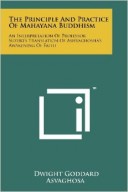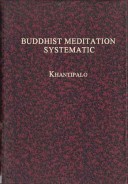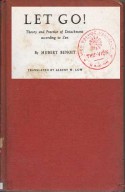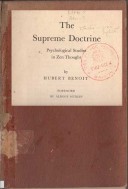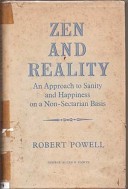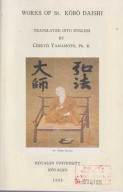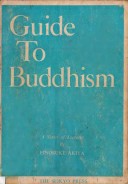Tìm Sách
Sách tiếng Anh-English >> Principle and Practice Of Mahayama Buddhism
Thông tin tra cứu
- Tên sách : Principle and Practice Of Mahayama Buddhism
- Tác giả : Dwight Goddard
- Dịch giả :
- Ngôn ngữ : Anh
- Số trang : 98
- Nhà xuất bản : Thetford Vermont-USA
- Năm xuất bản : 1933
- Phân loại : Sách tiếng Anh-English
- MCB : 1210000003858
- OPAC :
- Tóm tắt :
CONTENTS
PREFACE
INTRODUCTION
ONE. Ashvaghosha’s Introduction
TWO. Ignorance as the source of personality
THREE. Mind-essence as manifesting personality
FOUR. Mind-essence as emancipation of personality
FIVE. The Oneness of Mind-essence and personality
SIX. The place of Mind-essence in the unitary principle of Tathagata
SEVEN. False doctrines of egoism to be avoided
EIGHT. The True Path to Buddhahood
NINE. The right practice of the True Path
TEN. The rewards of the Path
PREFACE
ROFESSOR DAISETS TEITARO SUZUKI made his translation of the Mahayana Shradhotpada Shastra in 1900. It was published by the Open Court Publishing Company under the title: Ashvaghosha’s Awakening of Faith, but is now long out of print. It was the first English yersion and has always been held in high regard for it was a very difficult translation to make as the Sanskrit text had disappeared and he was obliged to make the translation from Chinese texts.
But even with all Professor Suzuki’s scholarship and care the English version is very difficult reading not alone because of certain infelicities of diction but more especially because of the profundities of the theme itself. This is to be regretted inasmuch as Ashvaghosha had clearly stated in his introduction that his purpose for writing was to explain the Principle and Practice of the Mahayana clearly and simply for the benefit of common people. The common people to whom Ashvaghosha dedicated his treatise were well acquainted with the teachings of the Mahayana—it was their familiar faith. If it was desirable to write an easily understood commentary for them, how much more is it desirable that the subject be presented to English readers of today, who know almost nothing about the Mahayana, in an easily understood form. Even for advanced students of the Mahayana this Scripture will be found no easy reading and they will generally find it advantageous to first read an interpretation of it before entering upon a serious study of the text itself.
Professor Suzuki, being an accomplished master of Sanskrit, Chinese and English, and being the present day highest authority on Mahayana metaphysics, is pre-eminently the one to make a scholarly and standard translation. It is understood that he is at work on the task in the hope that it may be published before the close of the present year. When it appears there will be less need for this interpretation, which is intended only to meet an immediate need but will soon pass out of use, while Professor Suzuki’s new translation will become an enduring possession. I am glad to take advantage of this opportunity to pay a tribute of respect to Professor Suzuki for the wonderful group of translations of the Mahayana Scriptures which he has already accomplished and is further intending to complete. First, there was his Ashvaghosha’s Mahayana Shraddhotpada in 1900; then in 1932 there was the Lankavatara; and now he is at work on Prajna-paramita Hridaya and the Gandhavyuha section of the tremendous Avatamsaka which is spoken of as “the grandest religious document ever written.” Professor Suzuki hopes to finish the task before he dies, or as he puts it, “I am not going to die until it is finished.”
After the exchange of a number of letters, Professor Suzuki writes the author as follows: “Dear Mr. Goddard: Although I am not in agreement with your idea of epitomising my old Ashvaghoshay, I can not prevent your doing your own work in your own way can I? Please do your best. There are some points in the old translation that I would like to discuss with you very fully: it is too bad that have so much to do in my own way…… For many years I have intended to make a new translation and still intend to do so, but until that is out, the old is to be read and used by the public and I have no right nor power to prevent it. Will you kindly refer to this fact in your new book and say that your use of the old is on your own responsibility. . . .”
The writer of this Interpretation in his eagerness to bring this noble Scripture to the attention of English readers that they may profit by it both intellectually and spiritually, and sincerely regretting that it lacks Professor Suzuki’s entire approval, assumes this responsibility.
This Interpretation uses different terms from the Suzuki Translation, it is freely interpreted even to the extent in places of enlarging upon it, and the sequence of sections in places is rearranged in order to bring out more clearly the argument of the theme. Toward the end of the treatise there is a single sentence that seems’ to contradict the whole development of the theme and is probably a later interpolation. It seems wiser to leave it out altogether than to run the risk of confusing the reader’s understanding of the treatise as a whole by a forced interpretation of it.
There are two other translations into English of this Shraddhotpada Shastra. One was made by Rev. Timothy Richard, a Christian Missionary, but he was so intent upon harmonising it with Christianity that he ruined its value as an understandable translation of a Buddhist text. The other translation was made by the editors of the magazine, THE SHRINE OF WISDOM, and was published in four successive issues: Vol. XI (1929), No. 42, and Vol. XI (1930), Nos. 43-45. It is an understandable translation, but by their unfamiliarity with Buddhist metaphysics they miss the esoteric significance of the Mahayana. It is for this reason that the present author bases his interpretation entirely upon Professor Suzuki’s translation.
Beginners must not expect to find the Scripture easy reading, nor to expect to fully understand it by a cursory, “once over.” It must be studied’ and thought about over and over again. But if it faithfully and perseveringlỵ studied and meditated upon, its teachings will awaken an unfolding faith and confidence in the principle of Tathagata and will encourage one to set his feet on the Path that leads to Buddahood. Once on the Path the gracious activity of Prajna-paramita will open its own channel for the more perfect understanding of the principle of Tathagata.
INTRODUCTION
The Buddhist Scripture known as Mahayana Shraddhotpada Shastra, or as it is commonly known in English, The Awakening of Faith in the Mahayana, was probably written during the first century of the Christian Era, although nothing is definitely known as to the exact date. It was probably written in Sanskrit but no copy of a Sanskrit original has been found, although copies must have been in existence as late as 800 A. D. when it was listed in a Chinese catalog. Before the Sanskrit original had disappeared, however, two Chinese translations had been made: the first by Paramartha, who came to China from India in 546 and died in 569 aged 71, is the best known by Chinese and Japanese scholars probably because the greatest commentary on the Scripture was based upon it. The second Chinese translation was made by Shikshananda. He was born in Kotan in 651 and died in China in 710; the translation was made after 700. These two translations were made from different copies but there is no essential difference between them. There are at least seven commentaries upon them and, as is commonly the case, the commentaries are more studied than the text itself. There was a Sanskrit version made from these Chinese versions.
The authorship is usually credited to Ashvaghosha although there is no positive evidence to that effect. Ashvaghosha was a very notable scholar and Buddhist protagonist. The dates of his birth and death are unknown but there is very general agreement that he lived during the latter half of the first century A. D. for he was present at the Great Council gathered by the Emperor Kanishka in Kashmir either as its co-president or at least as the personal representative of the Emperor. He also lived just previous to Nargajuna.
Ashvaghosha was a native of Central or Southern India and was born a Brahmin. He was a notable poet, orator and controversialist. This brought him to Northern India where he challenged a famous Buddhist scholar to a debate on the relative merits of Vedantism and Buddhism. Ashvaghosha was defeated and as a penalty became the disciple of the victor. He studied faithfully under his new Master and became wholly convinced of the rationality and superiority of Buddhism. From that time on he devoted himself to the propagation of the Mahayana type of Buddhism, writing many philosophical works and poetical versions of the highest merit, besides doing a great deal of public speaking.
At that time Kanishka as king of a province of Northwestern India was extending his territories by conquest and, by his capture of Benares, had control of the largest Buddhist empire of history. The king of Benares being unable to pay the tremendous fine levied by Kanishka, gave among other things the Buddha’s begging bowl and the person of Ashvaghosha. The latter followed his new protector to his capital in Khotan and there during the rest of his notable life continued his powerful advocacy of Mahayana doctrines. His most notable poetic work is Buddha-carita, an ornate life of Buddha from the traditional point of view; his outstanding prose work is Mahalamkara, the Book of Great Glory. Another shorter work entitled The Theory of Non-ego is looked upon as the forerunner of the great teachings of Nargajuna and Vasabandhu known as the Madyamika philosophy which is the basis of the more mystical aspect of Mahayana Buddhism.
Professor Suzuki in his Translation of the Awakening of Faith gives an exhaustive study and critique of the life and works of Ashvaghosha, from which this brief statement is taken, and to which further reference is urged.
This Scripture belongs to the very large section of early Mahayanistic Scriptures known as “The Prajna-paramita Family.” It is very similar to The Lankavatara Sutra, which the editor has interpreted under the title: SELF-REALISATION OF NOBLE WISDOM, and apparently follows it.
In the list of Indian Buddhist Patriarchs, Asvaghosha is counted as the* Twelfth and is followed by Nargajuna and Vasabandhu and the latter’s brother, Asangha. These three great philosophers and writers are credited with nearly a thousand books. They were the founders of what is known as the Madyamika School of Mahayanistic philosophy that has had so profound an influence upon the philosophic thought of Japan, China and Tibet. This philosophy is based upon and is a systematization and elaboration of the thought of Ashvaghosha as presented in this treatise and others of the Prajna-paramita group.
One would be foolish to hazard a guess as to what will happen to the culture of Europe and America as this Oriental philosophy and metaphysic come into correspondence with European philosophy of “pure reason” and her materialistic science, but into contact with each other they are steadily approaching and each is too firmly intrenched in the world’s thought to be easily dislodged. Hitherto the barriers of oceans and unknown languages have separated them, but these are fast fading away as barriers, and the adjustment of thought must be faced. The nations of the earth can not long remain “half slave and half free”; in the long last, Truth must emerge and dominate all alike.
The Sanskrit title of this Scripture is Mahayana Shraddhotpada. This is usually translated: THE AWAKENING OF FAITH IN THE MAHAYANA. For two reasons this is not a very good title in its English form. As translations go it is fairly close, but the background of meaning to the Sanskrit and English is quite different. The Sanskrit word is a compound of the two words shraddha and utpada. Shraddha means faith or confidence that is based on an unfolding experience that is verifiable by both the self or another and carries a sense of process and continuance. Whereas, faith, in its ordinary English sense carries the meaning of an acceptance of something that has not been proved, or that is difficult or impossible of proof. In English, “faith is the substance of things hoped for.” Shraddha signifies a conviction that is based on unfolding experience that is leading on to certitude. Utpada also carries a meaning of continuance; it is an awakening that goes on to an ever increasing awareness; this is in contrast to the English “awakening” which suggests momentariness. The English title suggests a sudden awakening of faith in Buddhism; the Sanskrit, suggests the beginning of a confidence that passes into aspiration and realisation. This is confirmed by the Chinese title, the characters of which carry the meaning, the rising of sight until it includes the whole horizon. It is the unfolding or creating of something, in this case, the unfolding within the mind of an ever clearing conviction as to the truth of the principles of Mahayana Buddhism. This distinction is ‘of the highest importance because it lies at the characteristic basis of the Mahayana, and indeed of all Buddhism. Buddhism teaches an actual becoming as the goal of a process that is inherent in the nature of Ultimate Reality itself. Christianity, on the contrary, teaches faith in a future state that is revealed and is controlled by another than the self. This becoming through one’s own effort at. following the Noble Path and its unfolding knowledge and Enlightenment, and its final self-giving in love for all animate life, is the whole aim of Buddhism.
The other reason why the title in English is not very satisfactory is this: The Sanskrit title is taken from the opening words in which Ashvaghosha states his reasons for writing; it does not cover the theme of the book at all. Ashvaghosha clearly states the theme of book at the close of the short introduction, when he says:
“For the sake of the people of this last class, I write this discourse in which the most excellent, the deepest, and the most inexhaustible doctrine of the Tathagata will be treated in comprehensive brevity.”
Ashvaghosha is writing a commentary on the Principle and Practice of Mahayana Buddhism for the benefit of the common and little educated people, that he may awaken in them a faith in the True Path which, if followed, will lead them on to Buddhahood. For this reason he makes the metaphysical discussion only a prelude to the explanation of the Path. Buddhism is not a philosophy that is to be accepted on faith; it is an unfolding experience that culminates in the identification of one’s own life with all Life. There must be an awakening of faith, to be sure, but Buddhist faith is a cosmic process that goes on unfolding into aspiration, into knowledge, into realisation of Wisdom, into the self-giving of Bodhisattvas, into Buddhahood.
Ashvaghosha’s treatment of his theme is unusually systematic and logical. He begins with a statement of the fundamental principle, passes on to its manifestation in the world of life and death, in the mental world, into the unitive world of spirit; after which he discusses its threefold significance as Tathagata. Then he explains the True Path which is the Noble Eightfold Path of Shakyamuni Buddha, and closes with a brief statement of the rewards that follow its Right Practice.
The kernel of the whole treatise lies in the meaning and significance of the Ultimate Principle of Tathagata which is described in its various aspects of significance. Sometimes it is described and spoken of as Bhutatathata, which Professor Suzuki prefers to translate as “Suchness.” Literally the word means, “it is, such as it is,” but as “Suchness” is an awkward English word that does not carry any definite meaning to uneducated ears, it only serves to confuse and baffle thought and understanding, instead of clarifying thought and carrying conviction. For that reason in this Interpretation, it seems best to translate it, Essence of Mind, or simply Essence. Dharmakaya, the body or principle of Truth, means exactly the same thing. The Chinese use two characters, meaning, True-form, to cover the same meaning and conception, and all of these terms refer to the “substance” aspect of Ultimate. Reality, or Tathagata. The term, Alayavijnana, or Universal Mind, is also used synonymous with Mind-essence when thinking of it as “storage” of Wisdom.
There are other terms used for the “potentiality” aspect of Tathagata, such as Sambhogakaya, the Bliss-body, or the Reward- body, or the Womb of Tathagata. Then there are still other terms used for the “activity” aspect of Tathagata, such as Nirmanakaya, Buddhahood in its many bodies of transformation, but all these terms refer to the same Ultimate Reality that in its nature is inconceivable. Ashvaghosha tries to elucidate this profound conception of Ultimate Reality as a ground for faith, but he teaches that certitude cannot come from knowledge alone. Certitude can only come from an intuitive self-realisation of Mind-essence. By following the Noble Path Bodhisattvas attain this realisation of highest perfect Wisdom and in the experience of that Wisdom they know that this threefold significance of Essence, Potentiality and Activity-balance is a perfect but inconceivable Oneness to which is given the name Tathagata. This term is a compound word which may mean either “thus truly comes,” or “thus truly goes.” That is, all that is possible to know of Ultimate Reality is what is seen in Radiant Wisdom or in the integrant Love of Buddhas as they yield up their selfness in love for all animate life.
Mahayana Buddhism may be considered under two heads: as a system of doctrine, and as a way of life.
As a system of doctrine, the Mahayana teaches the ultimate oneness of all things in Tathagata. This Ultimate Principle of Tathagata will be explained in five chapters: Ignorance as the source of personality; Mind-essence as manifesting personality; Mind-essence as emancipation of personality; the oneness of Mind-essence and personality; and the place of Mind-essence in the unitive principle of Tathagata.
As a way of life that leads from ignorance to wisdom, from suffering to blissful peace, from selfish egoism to Buddhahood, it will be explained in three chapters: the True Path, the right way of following the True Path, and the rewards of the Path.
The Mahayana makes no dogmatic assertions that are to be accepted on authority; it merely suggests explanations to awaken faith but each must work out his own emancipation. It bases its explanation on things as they appear to the senses in this world of life and death, then it advances to a consideration of the relations of these appearances by the higher mental processes, and then it urges self-realisation of the true nature of things by an appeal to the highest intuitive faculties. It is thus by the path of intuitive concentration that each one is to become convinced as to the truthfulness of the suggestions, for it is by self-realisation alone that one is to become identified with Buddhism. It is thus, also, that the True Path and the right way of following the True Path is of more consequence than the doctrinal system, for it is not by behavior, nor knowledge, nor mere faith, that one finally attains Buddhahood, but by identifying one’s life with the Principle of Tathagata.
 Facebook
Facebook
 Google
Google
 Google+
Google+
